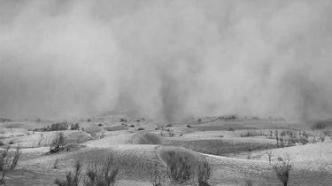

Cover of Issue 9, 2023, of Advances in Atmospheric Sciences. Photo provided by the editorial department of the journal
Recently, the research team of Huang Jianping, academician of the Chinese Academy of Sciences and professor of Lanzhou University, with the help of advanced air pollution models and satellite remote sensing technology, found that in the frequent dust weather events in my country this spring, the average contribution of Mongolia to the dust in northern my country is about 42%. %, and the average contribution of the Taklamakan Desert is about 26%. In addition, this study further integrated ground-based observations and satellite remote sensing observation data, and used machine learning methods to correct the model dust forecast, effectively improving the dust forecast effect. Relevant research results have been published as a cover article in Advances in Atmospheric Sciences.
Chen Siyu, the first author of the paper and a professor at Lanzhou University, pointed out that since January this year, 12 sand and dust processes have occurred in northern my country, and the number of sand and dust occurrences since 2023 is the most in the same period in the past 10 years. Among them, the sand and dust incidents that occurred from March 19 to 24 and April 9 to 11 have reached the level of sandstorms.
Chen Siyu said that the two weather systems, the cold front and the Mongolian cyclone, dominated these events, causing large-scale sandstorms in Mongolia and promoting the cross-border transport of sand and dust, resulting in short-term strong sandstorms in many places in my country. As the cold front continued to push southward, the sand and dust also spread southward, resulting in severe pollution in the Yangtze River Basin.
In order to further reveal the impact of different sand sources on dust events in my country, the research team determined the source and transmission path of dust in northern my country, and quantified the contribution of different sand sources to the dust concentration in northern my country by using the concentration weight trajectory analysis method. At the same time, in order to solve the common problems of unbalanced data distribution and long tail distribution in extreme meteorological data, the research team used the SMOTE resampling algorithm to resample the training data to make the distribution of learning data balanced and avoid the machine learning model from overestimating the "head data". "The preference of learning improves the forecast accuracy of key indicators such as PM10 in sand and dust weather events. (Original title "Lanzhou University Mongolia contributed more than 40% to the dust in northern my country on average this spring")
Related paper information:
https://doi.org/10.1007/s00376-023-3062-1